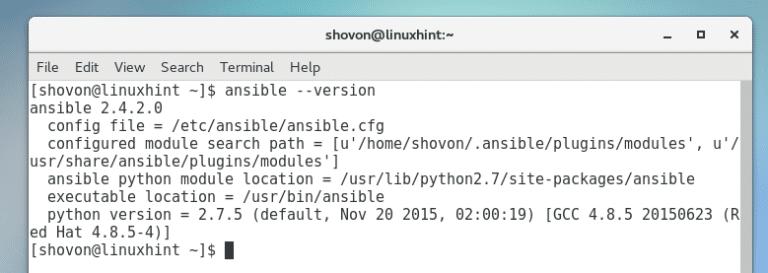


Run asynchronously, failing after X seconds We can check it’s installed correctly by running the ‘ansible’ command: ansible]# ansibleĭefine and run a single task 'playbook' against a set of hosts Once the process has finished you should see something like: This step will take a few minutes to run through – just enough time to grab a coffee. We can now go ahead and download the latest Ansible build from the Ansible page on github, then install the package: # git clone -recursive With that done, we want to use pip to install setup tools: # pip install setuptools -upgrade Once done, we can use YUM to install the following: # yum install gcc git python-pip python-devel libffi-devel openssl-devel To start, we need to add the EPEL repository: # yum install epel-release We’ll be installing some Python tools and libraries, then downloading and compiling the latest Ansible release. I’ve used a minimal Centos build – before installing Ansible it will be necessary to install some additional software that Ansible depends on. I will be using a Centos 7 virtual machine to run Ansible. For detailed information on Ansible, check out the Ansible site. Here, I will run though the steps to get Ansible installed and run a quick connectivity test to ensure it’s working as expected. As a starting point this is a quick post to cover getting Ansible up and running on Centos, with the aim of using it to later provision some AWS services. I’m going to be doing a few posts over the coming weeks around using Ansible with AWS.


 0 kommentar(er)
0 kommentar(er)
